Stylish floor lamps
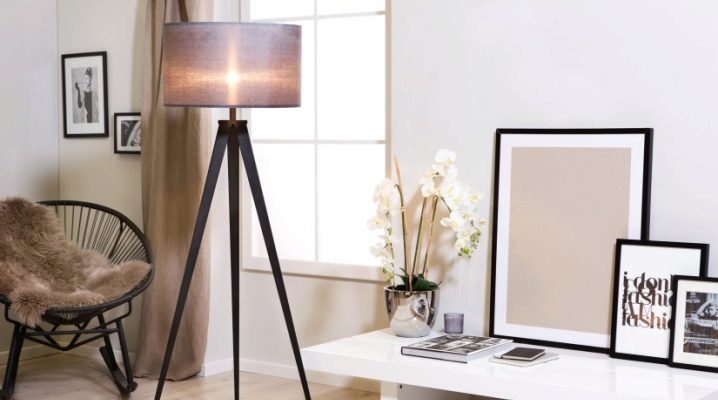
The quality of the organization of the light space in the room largely depends on the correct selection of lamps. The main task of the designer is to make the room light, cozy and comfortable at the same time. To cope with such a difficult task will help floor lamps - stylish floor lighting fixtures.
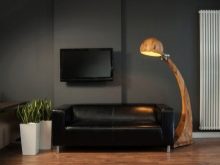
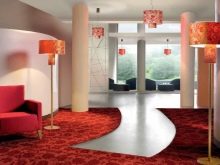
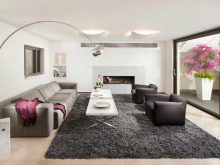
Peculiarities
The word "floor lamp" comes from the French torche, which literally translates as "torch". Torches are indeed the prototype of floor lamps. Perhaps everyone is familiar with the pictures depicting the corridors of medieval castles, illuminated by sources of open fire attached to the walls. Older references plunge us even deeper into history - torches, after all, were used by primitive people. Popular analogs of floor lamps were in Ancient Greece and Ancient Rome.
The archaic fashion that arose in Europe in the 17th-18th centuries did not leave aside the issues of organizing lighting. It was then that the similarities of modern floor lamps first appeared. They came to Russia from Prussia at the end of the 17th century. Since then, the technology of their creation has been constantly developing and improving.
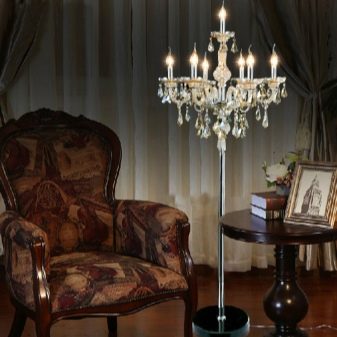
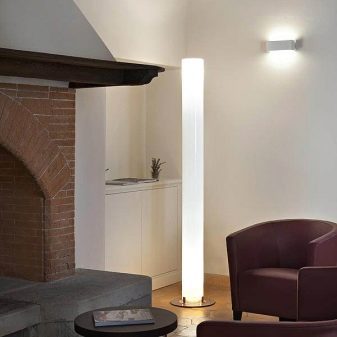
In the modern world, the main attributes of floor lamps are the following: the presence of a stand, as a rule, high, and a complete set with a lampshade. The presence of these attributes made it possible to hone the style of floor lamps and enhance their main advantage - unlike other types of lamps and chandeliers, floor lamps are almost always focused on creating a sense of coziness and comfort in the room. However, some models provide ample illumination. The range of floor lamps is now very large.
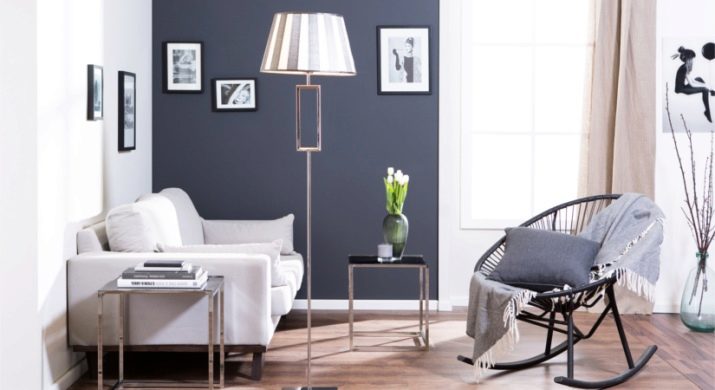
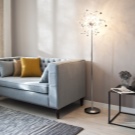
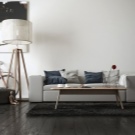
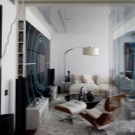
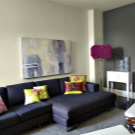
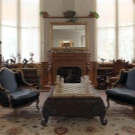
Views
Of course, there is no single classification of floor lamps, especially given the dynamism of this market segment. Let's list some of the most interesting or common types of lamps:
- Classic straight floor lamps... Usually very practical. They have a straight, in some cases inclined (sometimes adjustable within certain limits) design, and make the entire room where they are located more assembled. The main disadvantages are low variability in terms of movement and tilt.
Such light sources are perfect for rooms with design verified to the smallest detail. As a rule, there are models with a switch - it is convenient to place them near the bed in the bedroom. There are also series with a control panel. Often these lamps are sold with a decorative stand or a special base.
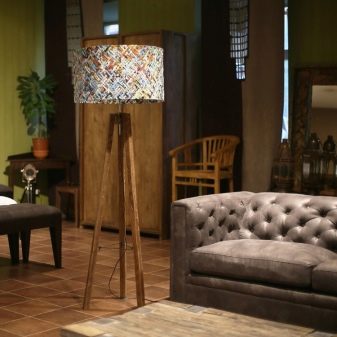

- Flexible luminaires. More variable. They allow you to adjust the slope, and hence the angle of incidence of light. Suitable for rooms with striking design, such as sleek modern living rooms where a lot of people like to gather. Each of the guests, therefore, has the opportunity to customize the lighting for themselves with the help of flexible lamps - for reading (there are models with a shelf), rest, communication.
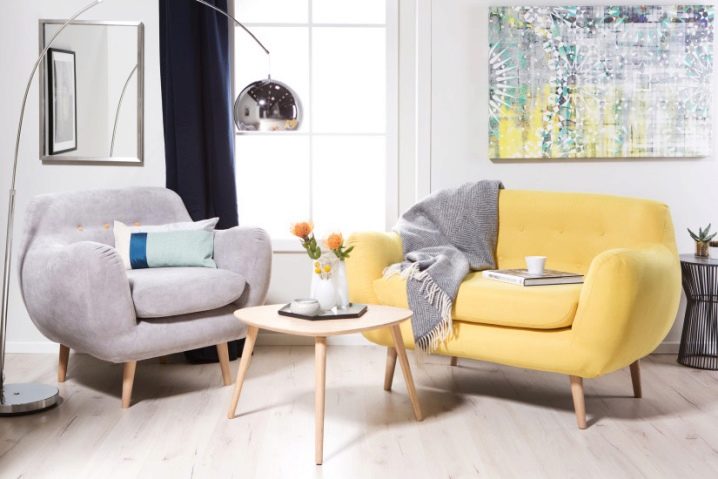
In addition, flexible luminaires are usually movable. There are children's models - their main advantage is that they are very reliable and not fragile, and as a result, they have a high degree of safety and are relatively safe for children. A convenient shelf in such lamps can be used to store toys.
Moreover, flexible lamps are the object of design innovations - it is in this segment that you can find interesting decorative objects, including floral motifs.
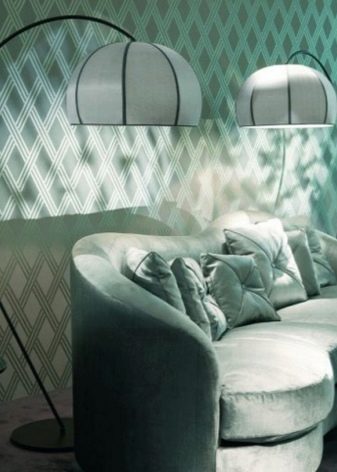
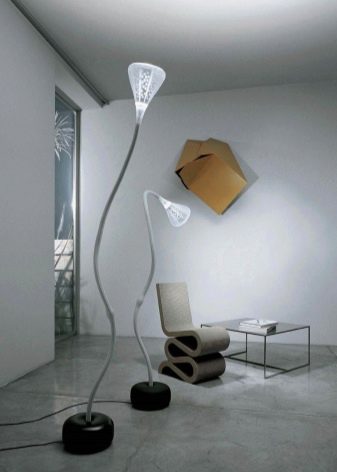
- Spotlights. As a rule, these are models for street lighting, however, there are also interior solutions that allow you to provide a point distribution of light in the room. Suitable for a courtyard, a local area, a country house or modern interiors with sufficient footage. They can create various visual effects.
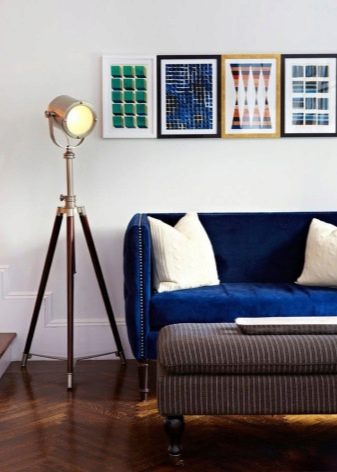
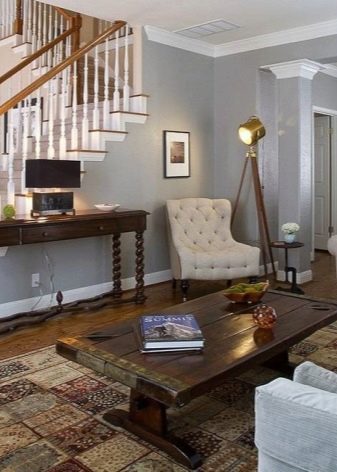
- Lamps-statues (sculptures)... Extremely varied. These are both "statues-torchbearers" and compositions with numerous lamps combined into a conventional chandelier. In the classic design, they are quite heavy and, as a rule, decorative - they are more suitable for museum interiors. Will fit into richly furnished living rooms, stylized as Baroque or Rococo.
Another segment of such statues is modern or minimalistic objects. Color and light solutions play a key role in them. They are often found in courtyards and in adjoining territories, however, they also serve as an excellent decoration for modern interiors. They can have various geometric shapes.
Another type of lamp-statues - objects decorated in a natural style - these are improvised vases, and bouquets of flowers, and whole flower arrangements.



We add that additional options can become a feature of almost any luminaire. On sale there are often lamps with a dimmer - an electronic dimmer, which was originally used in theaters. The device is relevant specifically for floor lamps, because when used correctly in combination with lamps of warm temperatures, an atmosphere of coziness and comfort is created.
Adjusting the brightness allows you to make from light devices not only the main sources of illumination, but also sources of illumination or dimming of individual parts of the interior.

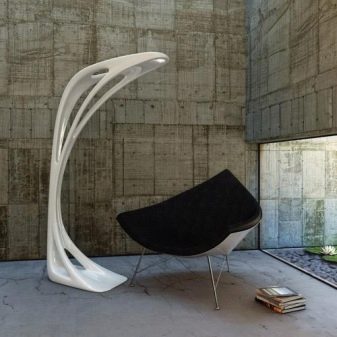
Dimensions and shape
All models can be conditionally divided into straight and curved. In the first case, the light is distributed in a classical manner and more evenly. In the second, the approach to organizing lighting is as varied as possible.
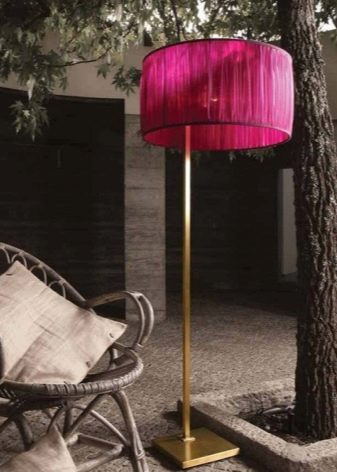
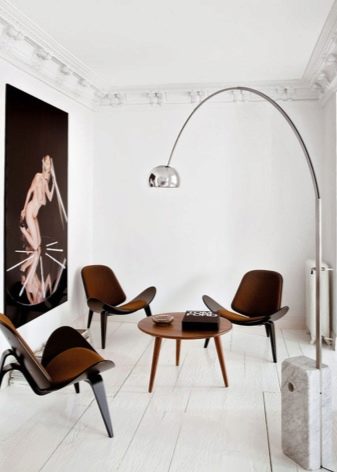
Curved lights are very diverse. The so-called fishing rod lamps are in trend now. Outwardly, they are very reminiscent of the usual fishing devices. Such light "rods" can "hang" over almost any interior item, be it a bed, chair, armchair or sofa. It is very practical and convenient when creating a specific light "spot" or accent in the interior.
Good idea for individualists or aesthetes. In addition, the curved or arched shapes of such lamps successfully emphasize the peculiarities of the interior, which is dominated by even round shapes and warm color temperatures.
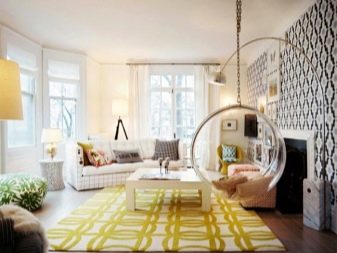
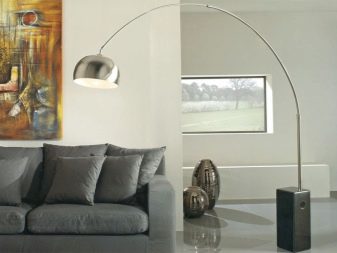
The main size of the lamps is the height - everything else is usually not so important, unless, of course, we are talking about lamps-statues or lamps-sculptures. High and low models are on sale. The height of the lamps in some cases reaches 2.5 meters and may even be higher. Such floor lamps are close in nature to ordinary chandeliers and are rarely used in standard interiors, since they often have a large, bulky, and often rectangular (a real "trouble" for chamber interiors, especially in the bedroom) base.
Low models are effective for organizing night lighting, individual places and rest areas. This is the best way to zone a room - turning part of it, for example, into a mini-library, another part into a place for conversation, etc.
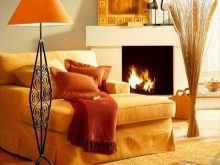

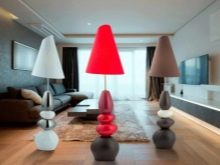
Colors
The main color in a floor lamp is the color of the lampshade. However, the color of the base structure and the color temperature of the lamp must also match.
For example, a red lampshade with a "cold" lamp will look very strange in a classic interior or in a bedroom. On the other hand, it can be suitable in some cases for modern high-tech interiors or when using neon lighting.
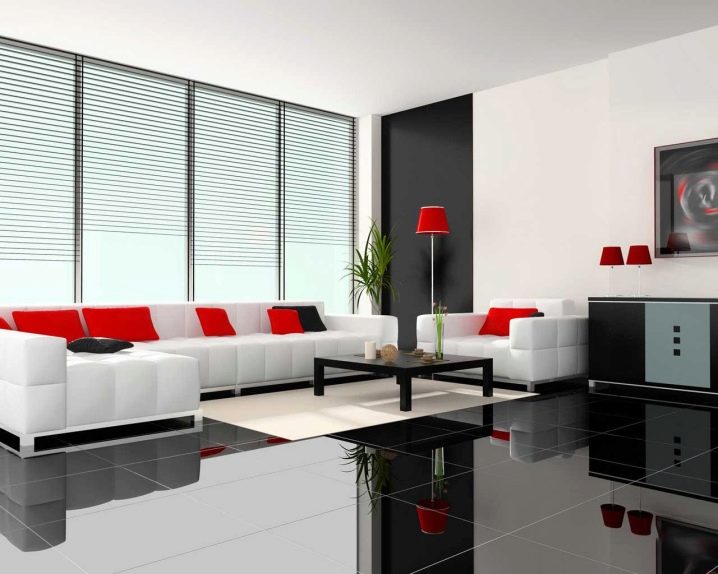
Let's list the main colors of lampshades and other structural elements suitable for them:
- Black... They are very common, add a touch of coldness to almost any interior. Looks good with white bases, especially in classic interiors, adding a consistent black and white color to them. Gilded bases are also suitable. They look good with soft colors of lamps, however, they do not always harmoniously fit into the interiors of bedrooms, especially small ones.
- White... These floor lamps are usually in one color or made using shades of gray. Often they talk about the owner's interest in modernity. Will fit well into the "cold" interiors of spacious bedrooms, living rooms or halls. Unlike black models, they are devoid of some aesthetic pathos, which makes them visually lighter.
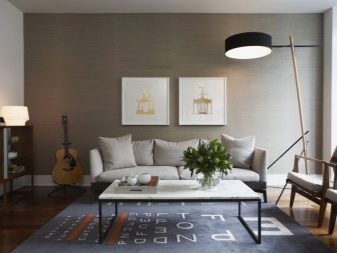

- Green, turquoise, wenge. Add naturalness to the room. Look in rooms with beautiful open views, panoramic windows. Let's clarify that the color "wenge" is as natural as possible. It took its name from African tropical trees, which grow to a height of 20 m. The color is very "stringy" and relaxing, which is not very appropriate in classic interiors.

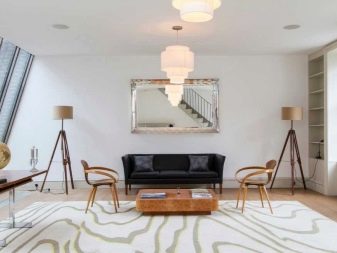
- Red, yellow, orange. They are combined with black interior objects, however, they still often look too bright. They show the eccentric character of the owner, suitable for the colonial style of the interior. The main thing when buying such floor lamps is not to achieve a color imbalance, otherwise - excessive eclecticism will destroy the light and color harmony of almost any room. Not a bad option for a children's bedroom as well.

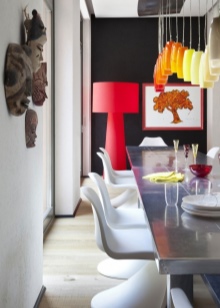

- Brown... Democratic and at the same time saturated, rich in shades. Contributes to the stylization of antique spaces, a great idea for historic interiors. In addition, it is not striking - such floor lamps will not stand out against the background of a beautifully furnished room and attract too much attention.
- Blue... A very difficult option for many interiors. First, blue is often and deservedly associated with industrial LEDs. Secondly, it is cold in itself. Wins in marine design tones or high-tech style. In the presence of large windows, you can beat the color scheme with natural heavenly shades.
- Pink or purple. Great idea for kids' bedrooms or a room for a teenage girl. From them comes a very soft light, moreover, warm.

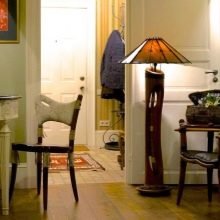
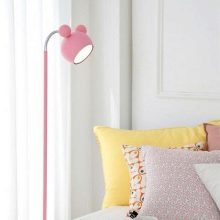
Also remember that colors can be combined. However, although many lampshades and floor lamp bases have different ornaments and compositions, the dominant component, as a rule, is read immediately, and it is this component that forms the light space of the room.
Materials (edit)
Floor lamps are made from various materials:
- Often used in their manufacture metal... Metal, forged, bronze products look very monolithic, add stability to the interior. However, they are often more suitable for lighting the local area. Forged floor lamps, stylized as floral ornaments or compositions, look favorably in the interior of living rooms.

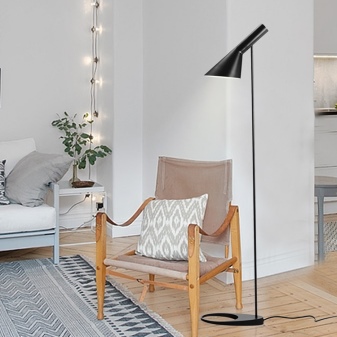
- Look luxurious crystal and some glass floor lamps. Outwardly, they are somewhat similar to chandeliers, often have an "umbrella" design, richly decorated with decorative elements, for example, pendants. The minimalist design adds a sense of jewelery and refinement - however, the interior must match. Glass and crystal transmit light well, which means that such products also allow you to achieve interesting visual effects. Stained glass floor lamps, on the contrary, are more intimate. They are often used both as floor and table ones, and are decorated with "warm" ornaments.
The trend now is not only for floral images, but also for geometry, mandalas.

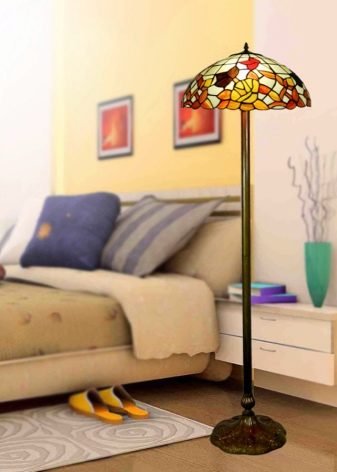
- Also distributed paper or wicker lampshades. Their main advantages are lightness and safety.It is advisable to use such materials in the organization of lighting for children's and living rooms - they will not break, deteriorate or get dirty - especially since they can always be cleaned or replaced.
- Another fashionable trend is floor lamps made from natural materials. For example, rattan - processed stems of calamus - a plant native to Southwest Asia and somewhat reminiscent of a palm tree. Such lamps are suitable for natural interiors, in particular, with a view of nature from a large panoramic window. In this case, Roman bamboo curtains will complete the composition. This will allow you to competently manage both natural and artificial lighting in the room.
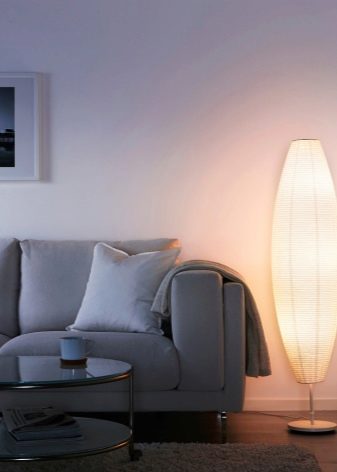
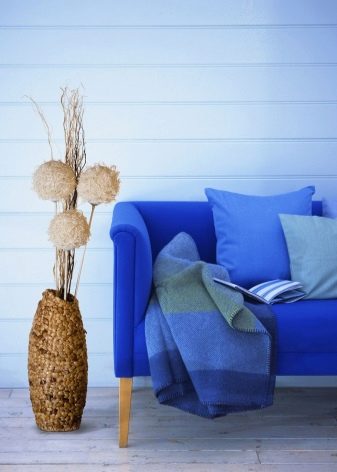
Design
The design of floor lamps is very diverse. If we leave out of brackets the color and material, which we have already talked about, then one cannot fail to note such an important detail as additional decorative elements.
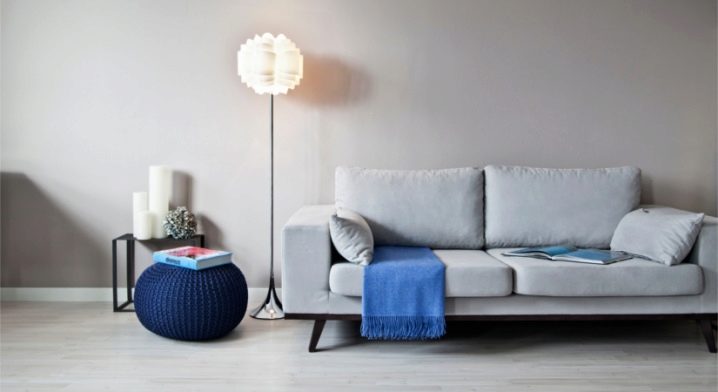
Floor lamps can be sold with pendants or other pendants. The "children's" version of the lamps "with fish" has not lost its popularity either. Ornaments in the form of tears, jewelry, small amulets can also serve as pendants.
An important design point is the surface texture. Shades with bubbles and other deformations can significantly affect the aesthetic perception of the light space and represent the luminaire itself in a new light. These seemingly small details are often almost fundamental to the design. It is thanks to them that the feeling of originality and uniqueness of even the most standard interior can be achieved.

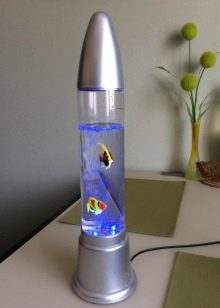
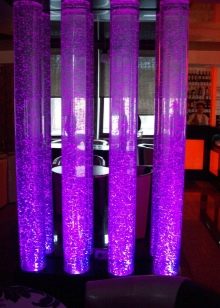
Styles
Floor lamps are suitable for rooms made in different styles:
- When classics or semi-antique designs, respectively, the models made in the classic version win. The decorative function is important here, it often overshadows all the others. Do not forget that floristry is a specialty of many old styles. So, when decorating the interior in the format of antique classics, floor lamps can even be stylized as flower vases in the center of the room or placed in the corner parts.
In the colonial style, you can come up with interesting combinations with color solutions of lampshades - use bright and saturated, including reds and shades.
However, retro styles are not only different archaic, baroque or classicism, but also more modern classics. Such stylization, for example, under the entourage of the first half of the 20th century, on the contrary, will make the room more intimate and add harmony in the details.
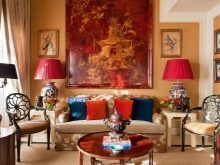
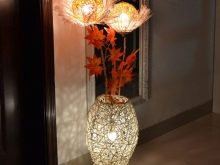
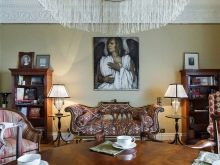
- A similar approach is appropriate for rooms decorated in modern styles, for example, high tech... However, here the design imagination is practically unlimited. You can safely experiment with lamps, color temperature and other components of artificial light transmission.
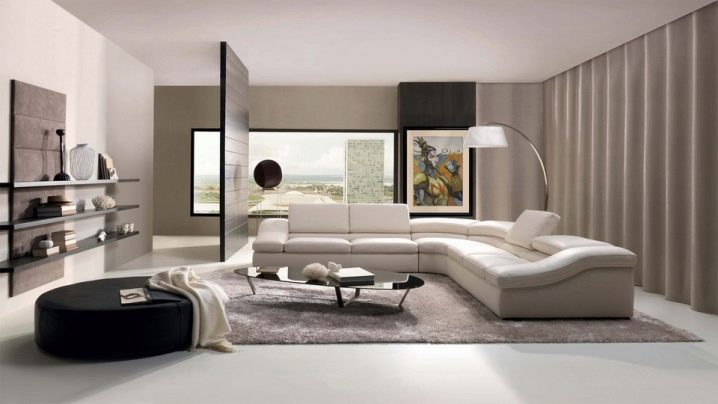
Let us add that often floor lamps are only additional sources of light, therefore, the approach of "style in style" is not excluded, when an additional space is created within the room with the help of a floor lamp, in which attention is focused on individual interior items. Such a cozy corner is perceived as a kind of independent world. It is only important that he does not enter into dissonance with the rest of the room.
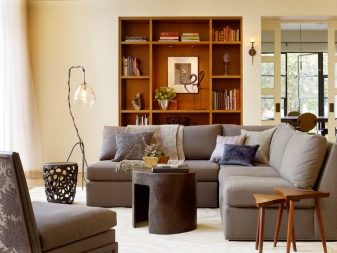
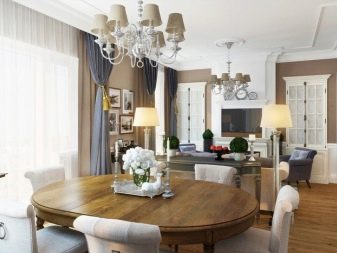
Selection Tips
Many buyers would like to purchase a modern, beautiful and at the same time stylish and original lighting fixture.
At the same time, it is important to take into account the main features of manufacturers and choose a product specifically for your interior:
- Keep in mind that trendy and unusual items are not often classified as cheap. However, if necessary, you can try to save on material, focusing on design. Elite floor lamps, as a rule, do not have "weak points", however, they are often very specific and are suitable only for specific interiors.
- Among other things, when buying, pay attention to the size, mobility and reliability of the mounts.This is important, especially if the family has children.
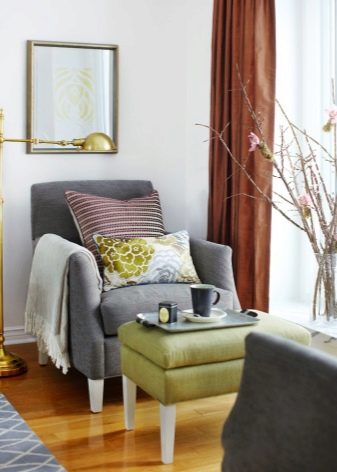
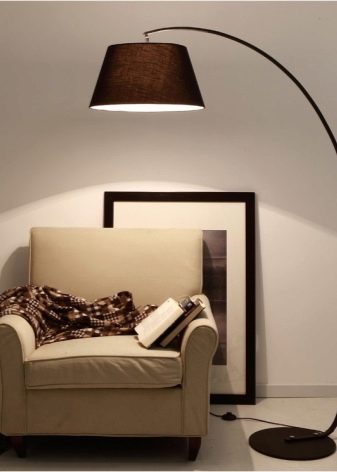
And a few more words about the features of manufacturers:
- Traditionally, the most reliable floor lamps are German. They differ both in the quality of materials and workmanship, as well as in the scrupulous study of details. Germany is famous for both classic style products and trendy minimalist designs.
- Lamps from Holland successfully combine modern and classic styles - they are very elegant lighting fixtures.
- Polish floor lamps, on the other hand, are often very practical, but at the same time made with a unique sense of style.
- Spanish products are often formalistic - in this area of design Spain is one of the first. Among the products of this country, you can pick up fashionable floor lamps, statues or sculptures that are close to both the classics and the modern.
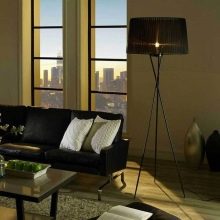
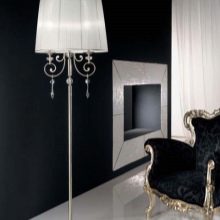

- Japanese floor lamps are also very interesting. It is hard not to notice them in the interior: designed in an oriental style, often rectangular and ornamented, giving a soft and warm light, they are perfect for creating a sense of coziness in a living room or bedroom.
- The market of Chinese floor lamps is also developing now. In terms of price, Chinese products are more affordable than European ones, and at the same time they do not always lose significantly in quality. However, in order not to be mistaken, it is better to buy branded Chinese goods.
- Popularity with consumers and Russian-made floor lamps is growing. They are technologically advanced, affordable and practical, but they do not always meet high aesthetic standards.
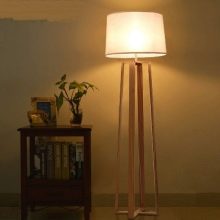
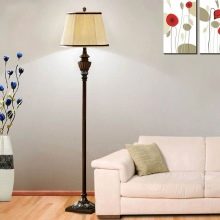

Interior options
Floor lamps will successfully fit into almost any room. Let's consider some of the most interesting examples for rooms for various purposes.
- In a small bedroom, German or Japanese floor lamps will look beautiful. Better not to buy too decorative items. The main task here is to create coziness with the help of soft warm light and beautiful ornaments. The latter on the lampshade can be both geometric and floral - this is a matter of taste.
- In the children's room, lamps should be selected from safe and, preferably, natural materials. No crystal, glass and a minimum of metal is better. Lightweight woven or paper lampshades will do. The decorative function will be taken over by pendants in the form of fish or other toys.
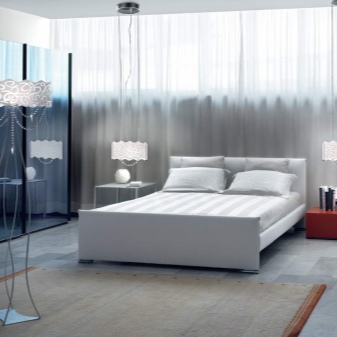
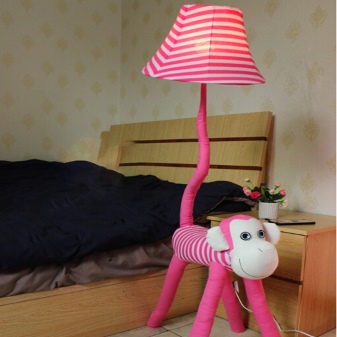
- For a large and richly furnished living room, it is better to buy a classic decorative floor lamp. It can be sculptural and even high enough, however, do not get carried away with stylizations, unless, of course, you want to turn the premises into a museum. The modern classics are also characterized by "healthy" minimalism.
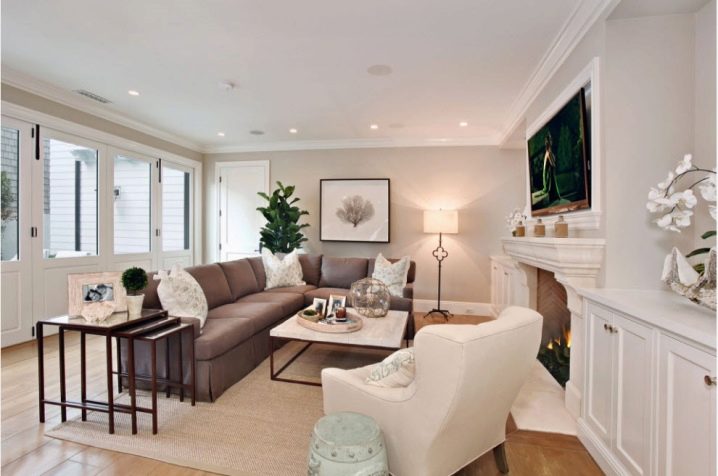
One way or another, the choice of a floor lamp for a particular room is a matter of taste. This type of lighting fixture is able to solve many problems: to create coziness in the room, and to improve the quality of lighting, the main thing is to use it wisely.
How to choose a floor lamp, see the next video.













The comment was sent successfully.